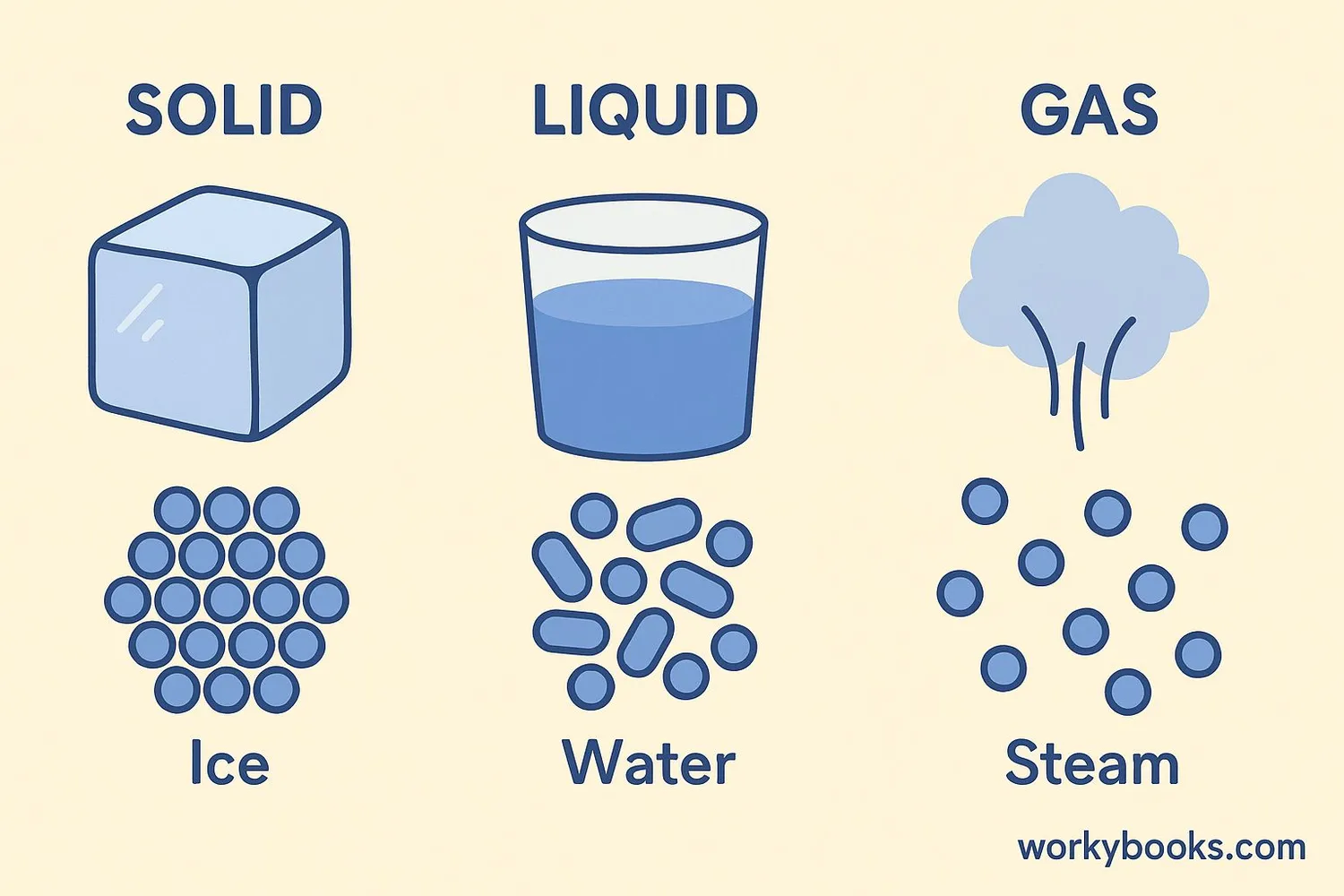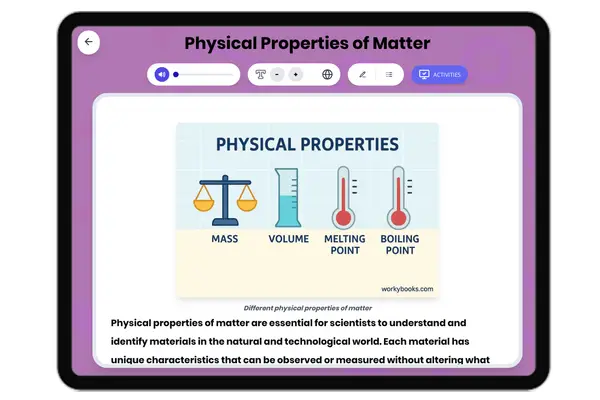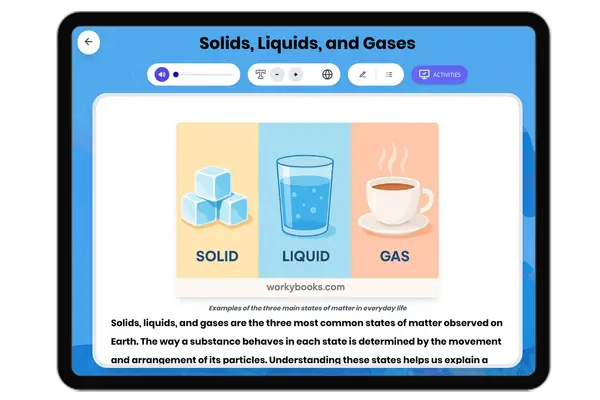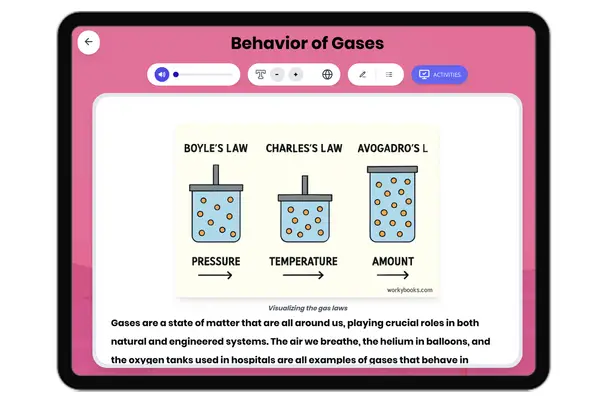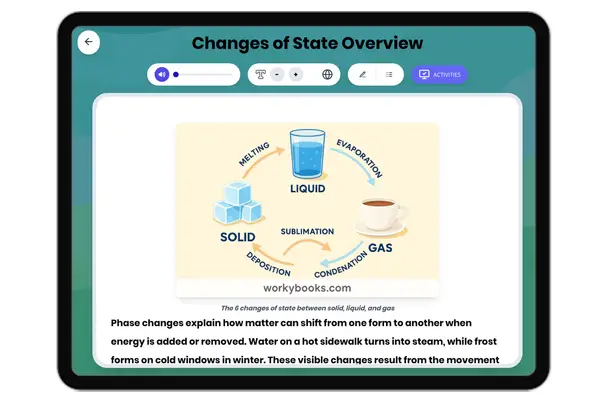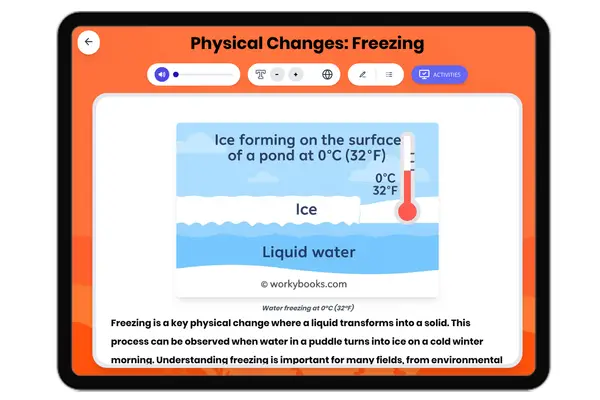Particle Model of Matter — Reading Comprehension
Premium Resource
Grades
- 5
- 6
- 7
- 8
Standards
- MS-PS1-1
- MS-PS1-4
PRINT+DIGITAL RESOURCE
This learning resource is available in interactive and printable formats. The interactive worksheet can be played online and assigned to students. The Printable PDF version can be downloaded and printed for completion by hand.
About This Reader
This comprehensive science reading passage for grades 6-8 explores the particle model of matter, aligning with NGSS standards MS-PS1-1 and MS-PS1-4. Students will learn how all matter is composed of tiny particles—atoms and molecules—and how their arrangement and movement differ in solids, liquids, and gases. The passage integrates scientific thinking by explaining how scientists use evidence from experiments and observations to understand particle behavior. It connects these microscopic mechanisms to real-world examples, such as why ice floats or how air fills a balloon. The resource includes a glossary, differentiated and Spanish versions, multiple-choice and writing activities, and graphic organizers. This text is ideal for building foundational knowledge of physical science and can be used with audio integration for accessible learning. Suitable for middle school science classrooms or home study.
Perfect For:
👩🏫 Teachers
- • Reading comprehension practice
- • Auto-graded assessments
- • Literacy skill development
👨👩👧👦 Parents
- • Reading practice at home
- • Comprehension improvement
- • Educational reading time
🏠 Homeschoolers
- • Reading curriculum support
- • Independent reading practice
- • Progress monitoring
Reading Features:
📖
Reading Passage
Engaging fiction or nonfiction text
❓
Comprehension Quiz
Auto-graded questions
📊
Instant Feedback
Immediate results and scoring
📄
Printable Version
Download for offline reading
🔊
Read Aloud
Voice-over with word highlighting


